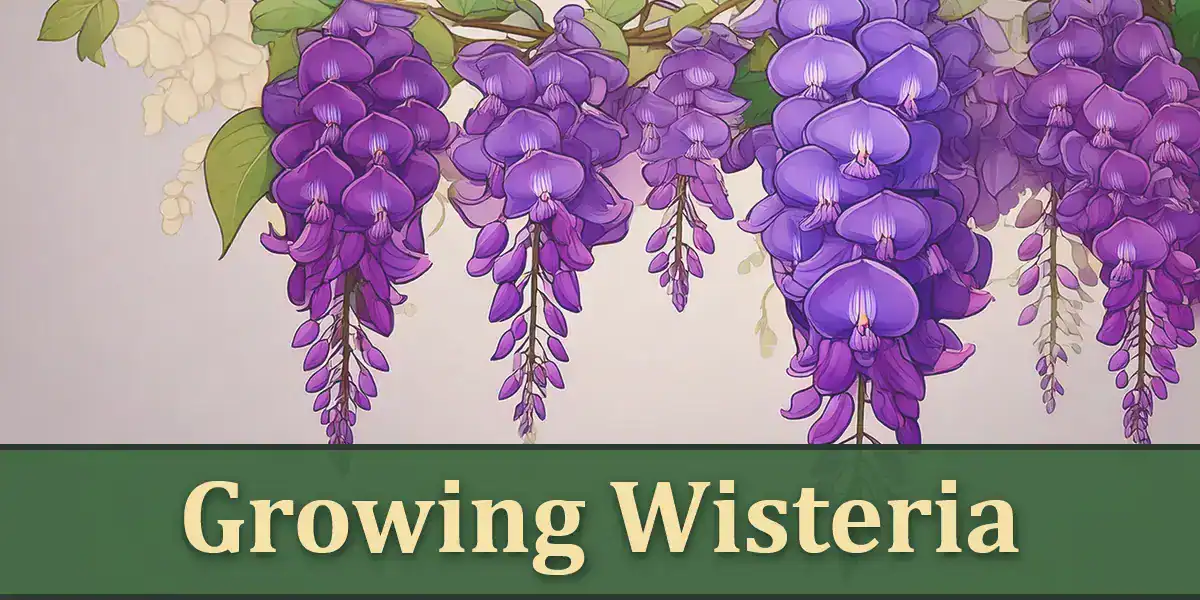Imagine a canopy of lush foliage and cascading purple blooms that shelter you from the summer sun and envelop you with their soft perfume.
Those fragrant flowers hang from a fast-growing wisteria vine, a hardy plant that can live for over 50 years with proper care. It thrives on trellises, garden walls, arches, and pergolas. You can train it to climb or shape it into a standalone tree. Either way, it rewards you with a spectacle of lavender, blue, pink, or white blossoms every spring and summer.
Wisteria, a member of the Fabaceae (pea) family, originally hails from parts of Asia and North America. Chinese wisteria (Wisteria sinensis) and Japanese wisteria (Wisteria floribunda) are among the most popular species worldwide, prized for their long, pendulous blossoms. American wisteria (Wisteria frutescens), while less vigorous, is ideal for gardeners looking for something more compact and locale-specific.
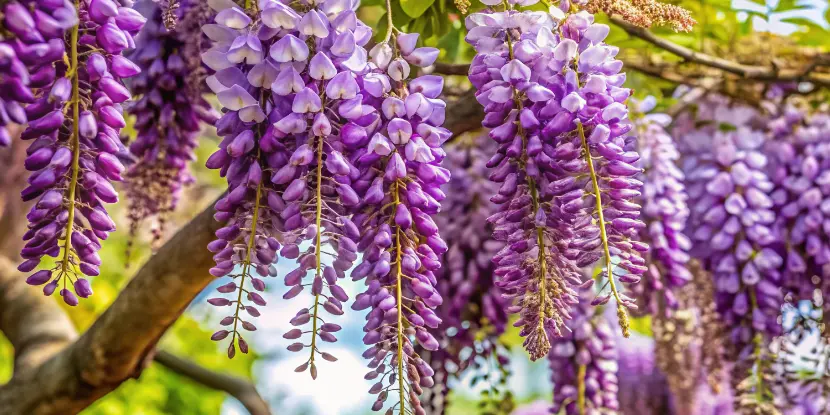
Chinese Wisteria sinensis plants are among the most popular flowering species worldwide.
Best Varieties for Southern California
Coastal Areas
For breezy and temperate coastal conditions, you’ll want wisteria varieties resistant to salt and wind.
- Wisteria floribunda Royal Purple’ – Noted for its vivid purple flowers and sweet perfume.
- Wisteria sinensis ‘Alba’ – A white-flowered wisteria that blooms profusely in early summer.
Inland Areas
These hardier varieties can withstand inland California’s hotter and drier summers.
- Wisteria sinensis ‘Black Dragon’ – Deep violet flowers bloom prolifically on this heat-tolerant variety.
- Wisteria floribunda ‘Lawrence’ – This variety produces large clusters of lilac-pink flowers and is known for its heat resilience.
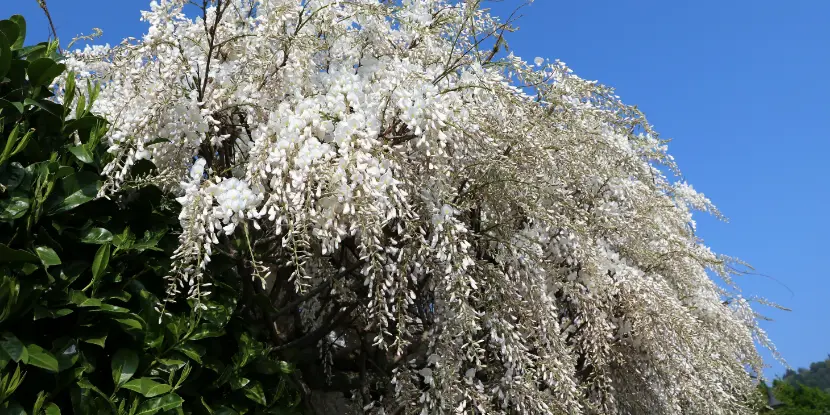
Wisteria sinensis ‘Alba’ grows well in California’s coastal area,
Inland Valleys
Wisteria in the inland valley should be heat-tolerant but also able to weather occasional frost.
- Wisteria sinensis ‘Amethyst Falls’ – A compact variety that produces fragrant purple flowers throughout the summer.
- Wisteria frutescens ‘Nivea’ – Native to the eastern United States, this cold-hardy variety bears striking clusters of white flowers.
Optimal Growing Conditions
Light
- Wisteria loves sunlight and needs at least six hours a day to bloom.
- Some afternoon shade can reduce heat stress in warmer regions.
Temperature
- Flourishes in USDA Hardiness Zones 5–9, which encompass most Southern California cities.
- Mild winters and hot summers offer an excellent environment for wisteria.
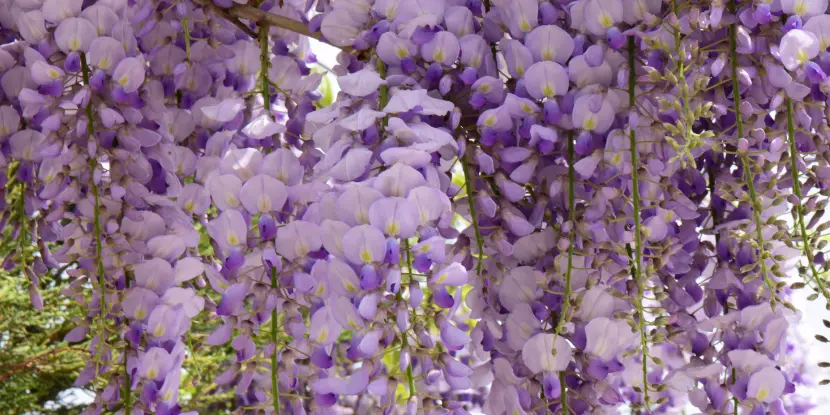
Wisteria floribunda is noted for its vivid purple flowers and sweet perfume.
Soil
- Well-draining soil is non-negotiable.
- A neutral to slightly acidic pH (6.0–7.0) works best.
Propagating Wisteria
You can propagate wisteria via seeds or cuttings, but cuttings offer faster flowering results.
From Seeds
- Collect seeds from mature pods in the fall.
- Plant them in a pot with good-quality, loamy soil.
- Keep pots in a sunny, warm spot and water regularly.
- Note: Seed-grown wisteria may take 10–15 years to flower.
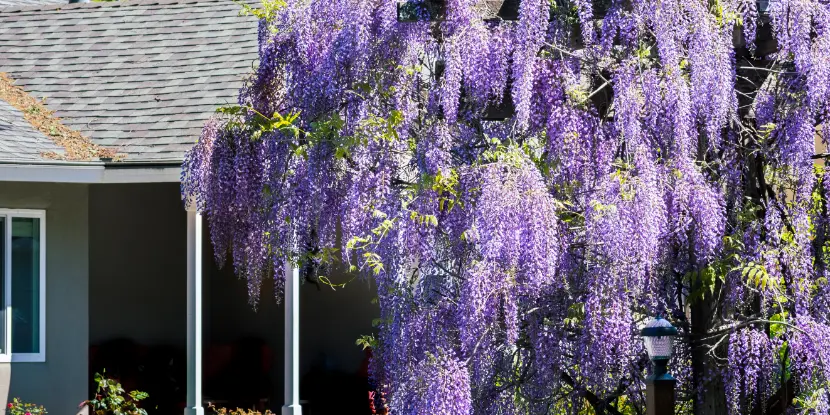
A blooming wisteria in a California yard.
From Cuttings
- Take cuttings in late spring or early summer from mature plants.
- Use rooting hormone and plant in a soil mixture of sand and compost.
- Mist frequently to keep the soil moist.
- Cuttings typically take 2–3 years to produce flowers.
Planting Wisteria
- Pick a sunny location with sturdy support, like a trellis or wall for the climbing vine.
- Mix compost or organic matter into your soil to boost fertility.
- Ensure good drainage.
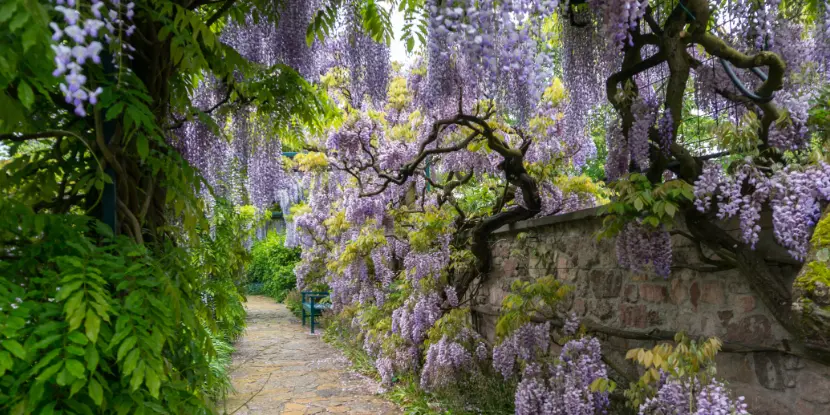
Some day, this might be the view out your back door.
Planting in Pots
- Select a large container with a drainage hole.
- Use a nutrient-rich potting mix, ideally with loam and perlite.
- Repot every 2–3 years as growth accelerates.
Planting in the Garden
- Dig a hole twice as wide and as deep as the root ball.
- Gently place the plant, backfill with soil, and water thoroughly.
- Add mulch to retain moisture.
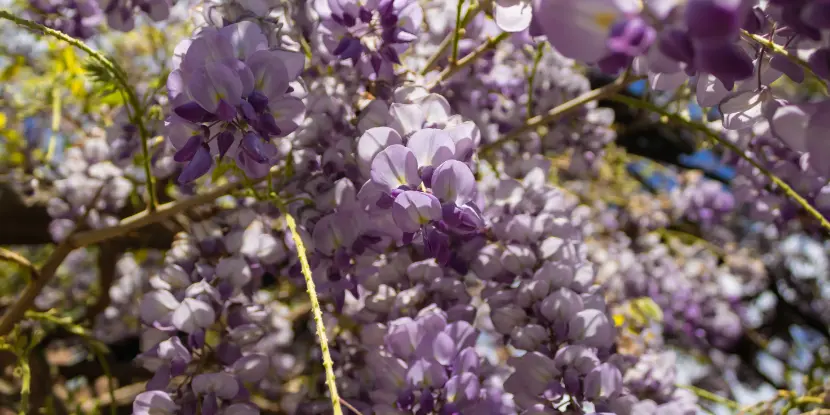
Amethyst Falls is a compact wisteria variety that produces fragrant purple flowers throughout the summer.
Wisteria Care
Water
- Young plants need consistent watering, especially during the first few years.
- Keep the top few inches of soil moist but not saturated.
- Mature plants are drought-tolerant and require less frequent watering.
Fertilizer
- Use a low-nitrogen fertilizer in spring to enhance flower production.
- Avoid high-nitrogen fertilizers, which promote leafy growth at the expense of flowers.
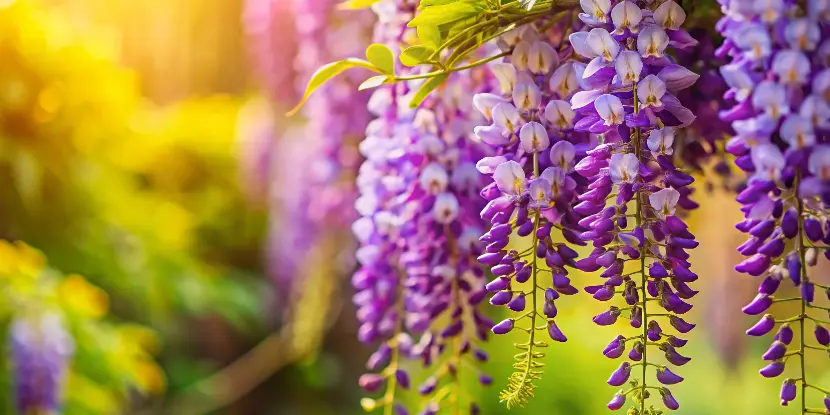
The hanging blossoms of an American miniature wisteria.
Pests & Diseases
- Common pests include aphids and scale insects. Treat them with insecticidal soap.
- Root rot may occur in waterlogged soil. Use well-draining soil and avoid overwatering.
Pruning Wisteria
- Prune wisteria in late winter or early spring while the plant is dormant.
- Remove dead, damaged, or crossing branches.
- Cut back long shoots to encourage shorter flowering spurs.
- Train young plants onto a sturdy support structure, such as a trellis or pergola.

An old wisteria plant trained into a tree,
FAQs: Growing Wisteria
Q: When does wisteria flower?
Wisteria typically blooms in spring, with flowers appearing before the leaves fully develop.
Q: How long does wisteria take to flower?
Newly propagated wisteria can take 5–10 years to produce flowers. Grafted or cutting-grown plants tend to flower sooner.
Q: Is wisteria drought-resistant and low-maintenance?
Once established, wisteria becomes drought-tolerant and relatively low-maintenance. However, it needs regular pruning.
Q: How long does a wisteria plant live?
Wisteria has an impressive lifespan and can thrive for over 50 years with proper care.
Q: Can wisteria be shaped into a tree?
Yes! You can grow wisteria as a small ornamental tree by training and pruning the vine over several years.
Q: Can wisteria grow in pots?
Yes, but choose a large container and provide sturdy support.
Q: Can wisteria damage walls?
Yes, if left unchecked. Its aggressive growth makes pruning essential.
Q: Can wisteria grow in shade?
Yes, but partial shade may reduce flowering.
Q: Does wisteria spread quickly?
Yes, wisteria is a vigorous grower and may require containment.
Q: How tall does wisteria grow?
Depending on the support structure, it can reach up to 30 feet or more.
Q: How often should I water potted wisteria?
Water twice-weekly during warm months and reduce during winter dormancy.
Q: What are some good companion plants for wisteria?
Roses, lavender, and clematis blend beautifully with wisteria.

